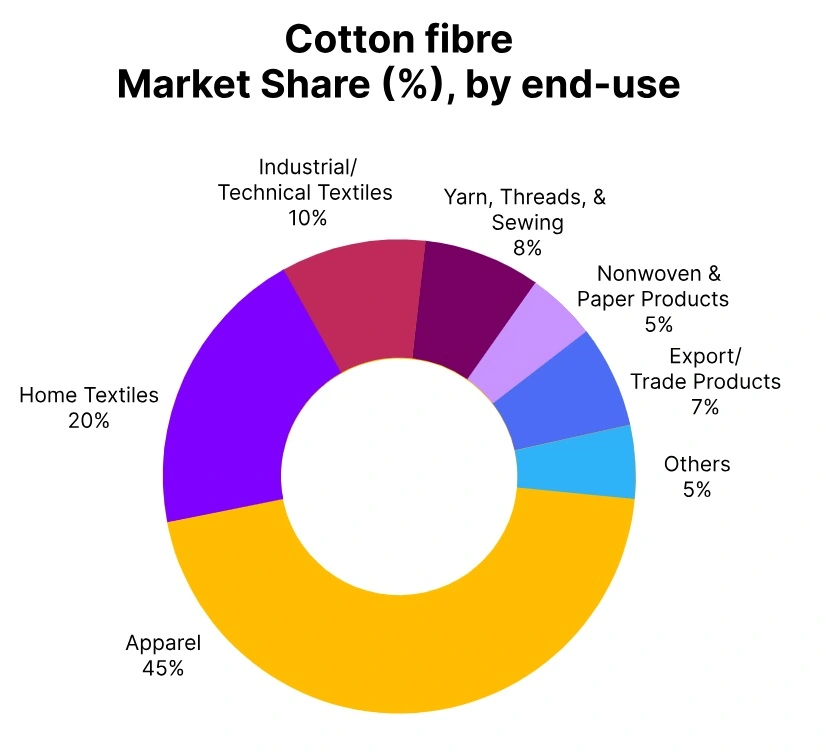Price-Watch’s most active coverage of Cotton Fibre price assessment:
- China Cotton Index 3128B (28 mm) Ex-Zhengzhou, China
- China Cotton Index 2227B (27 mm) Ex-Zhengzhou, China
- China Cotton Index 2129B (29 mm) Ex-Zhengzhou, China
- Cotlook A Index 28 mm CFR Far East Asia, Far East Asia
- Brazil Cotton Index (CEPEA/ESALQ) 24 mm Ex-São Paulo, Brazil
- Shankar-6 – Gujarat 29 mm Ex-Gin Gujarat, India
- KCA Spot Rate 27 mm Ex-Gin Karachi, Pakistan
Cotton Fibre Price Trend Q3 2025
In Q3 2025, the global cotton fibre price trend has been mixed but generally stable. The price trend of the Cotlook A Index, a key international benchmark, has been up by about 0.4% from the previous quarter, supported by steady global demand, though in September 2025, Cotlook A Index prices have been around USD 1720 per metric ton, reflecting a slight 0.7% easing.
Cotton Fibre price trends in China and India have been upward, driven by strong domestic consumption and stable textile operations, whereas Pakistan and Brazil have been experiencing a downward trend due to softer demand and abundant supply. Despite these regional differences, the overall global price trend has been cautiously optimistic, underpinned by steady trade flows, resilient downstream demand, and balanced supply conditions heading into the final quarter of 2025.
Brazil
Cotton fibre domestic prices Brazil, Grade- Brazil Cotton Index (CEPEA/ESALQ) 24 mm Ex-São Paulo.
In Q3 2025, Cotton fibre prices in Brazil have fallen sharply by approximately 5% compared to the previous quarter, with the downward trend continuing into September, when prices have dropped another 5% month-on-month. The Cotton fibre price trend in Brazil has remained consistently negative, primarily driven by the advancement of the 2024/25 cotton harvest, which boosted supply and prompted sellers to reduce quotations. In September 2025, cotton fibre prices in Brazil have been around USD 1470 /MT, reflecting this decline. Furthermore, the weakening of the Brazilian real against the U.S. dollar has added additional pressure on domestic prices.
China
Cotton fibre domestic prices China, Grade- China Cotton Index 3128B (28 mm) Ex-Zhengzhou.
During Q3 2025, cotton fibre prices in China increased around 7%, quarter-on-quarter, confirming the strength of the domestic market. The Cotton fibre price trend in China has been upwards, and in September 2025, cotton fibre prices in China have assessed at approximately USD 2150-2180/MT, reflecting a 0.9% increase from the previous month.
This increase has been supported by robust demand for quality cotton, and stable macroeconomic conditions, which helped sustain the textile industry. In addition, government policies (e.g., some subsidies for farmers) have bolstered market confidence. Regional supply has been tight, along with improved buying from textile mills further contributing to the increase in prices.
India
Cotton fibre domestic prices Gujarat (India), Grade- Shankar-6 – Gujarat 29 mm Ex-Gin Gujarat.
According to Price-Watch, in Q3 2025, cotton fibre prices in Gujarat have recorded a moderate rise of around 4% from the previous quarter, trading between 1810-1815 USD/MT, supported by steady domestic demand and limited regional supply. The Cotton Fibre price trend has been generally upward, indicating a firm market tone. However, in September 2025, cotton prices have eased to approximately 1740–1760 USD/MT, declining about 2% due to anticipated cotton imports and a cautious outlook within the textile industry amid higher raw material costs.
Government measures, such as the extension of zero-duty import facilities, have also contributed to this short-term correction. Overall, the quarter has reflected an upward trajectory for cotton prices in India, tempered by brief market adjustments, highlighting the combined impact of supply dynamics, policy interventions, and demand trends.
Pakistan
Cotton fibre domestic prices Ex-Gin Karachi, Pakistan, Grade- KCA Spot Rate 27 mm.
During the third quarter of 2025, cotton fibre prices in Pakistan experienced a decline of approximately 4%, signalling a softness in the cotton fibre market. The Cotton Fibre price trend in Pakistan has been following a lower trajectory. And quarterly data shows that cotton fibre prices in Pakistan settled at approximately 1480–1485 USD/MT in September 2025, around 3% lower than the previous month. Easing price pressures have been stemming from lower domestic demand, and increased competitive pressures from cotton imports, as well as broader underlying macroeconomic conditions impacting textile production on the whole.




